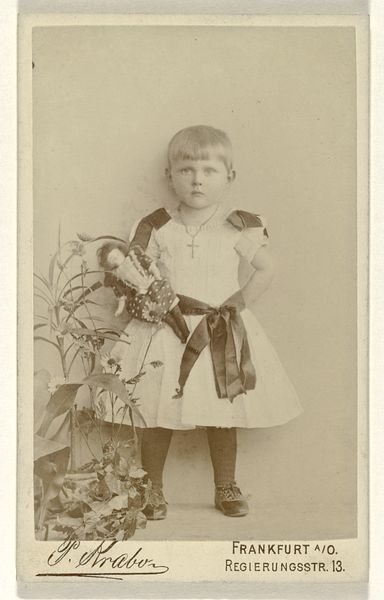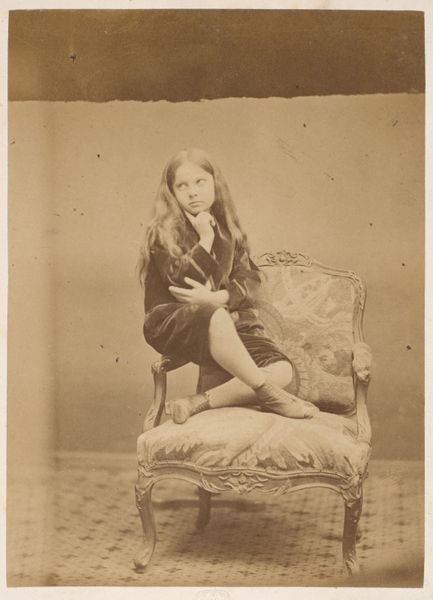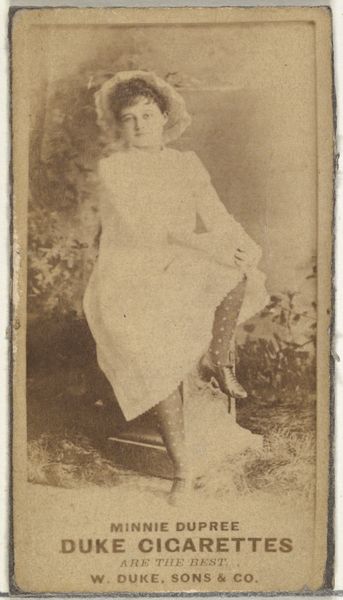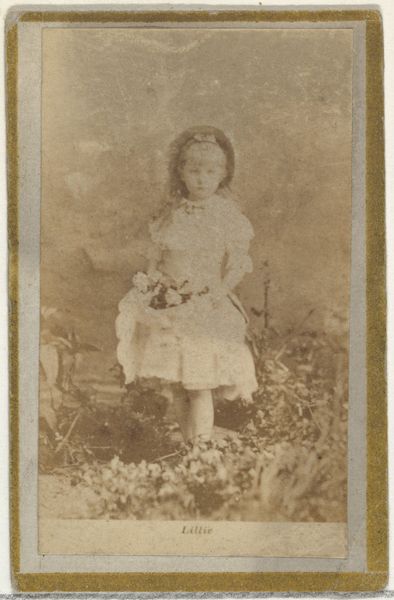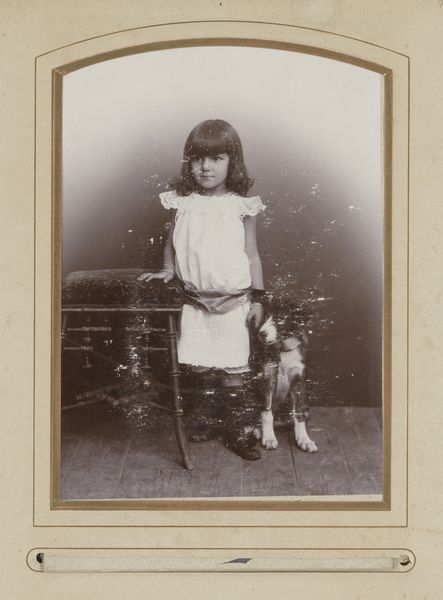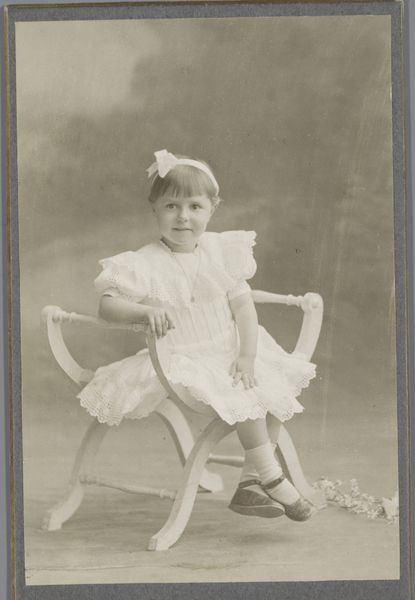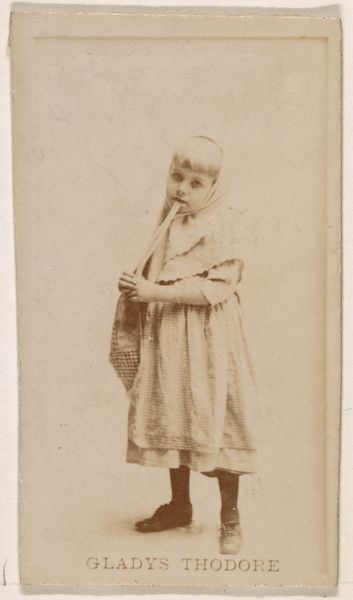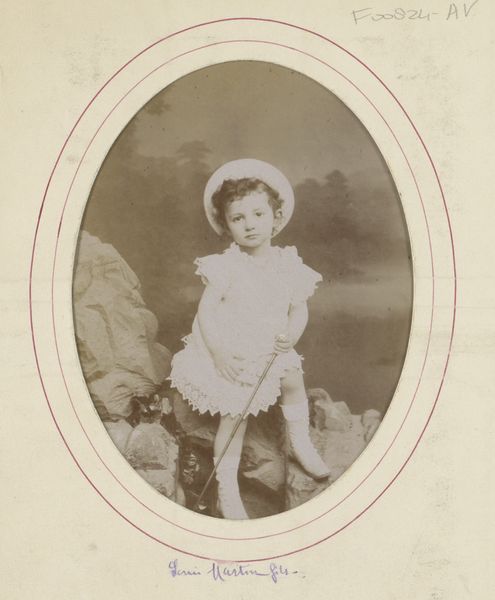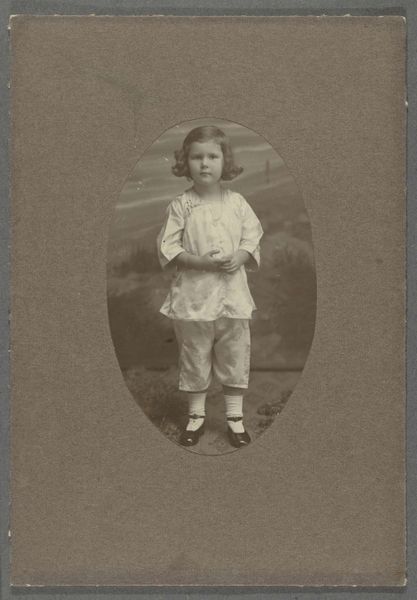
George Duckworth (Study for the Infant Saint John) 1872
0:00
0:00
Dimensions: 36.2 × 26.5 cm (image); 44.4 × 35.4 cm (mount)
Copyright: Public Domain
Curator: Here we have Julia Margaret Cameron's photographic study from 1872, "George Duckworth (Study for the Infant Saint John)," currently housed here at the Art Institute of Chicago. It's a stunning example of her approach to portraiture. Editor: My first thought? It's incredibly soft. The light almost seems to melt the edges of the figure. It feels dreamlike, almost as if I’m seeing a memory rather than a posed image. Curator: Precisely. Cameron's deliberate use of soft focus aligns with the aesthetic principles of Pictorialism. Note how the lack of sharp detail actually amplifies the emotive power, drawing our eye to the child’s direct gaze and the textured drapery around him. Editor: It’s fascinating how she positions him amongst the leaves. Almost as if he's an organic part of that foliage, it kind of removes him from reality into this… Eden-like state. What do you make of the specific choice of Saint John? Curator: The choice is deliberate, echoing Renaissance paintings of John the Baptist as a youth, a common theme explored by Victorian artists. By casting the young George Duckworth, her neighbor’s son, as the saint, she elevates the domestic sphere into the realm of high art, collapsing traditional hierarchies. Editor: Yet there’s an unease I find… the setting is idealised but his expression feels strangely unidealised. Almost… petulant? Like a cherub who'd rather be doing something else entirely. It adds a wonderfully contradictory tension to the picture. Curator: That tension, I believe, arises from the semiotic interplay between the historical trope and the child’s undeniable presence. Duckworth is not simply a signifier of saintliness, he also exists as himself, disrupting any singular interpretation. Editor: It’s what makes Cameron so lasting, I think. She doesn't settle for pretty surfaces. This picture whispers questions and possibilities, instead of shouting answers. That slightly exasperated child in Eden becomes more profound in ways that strict adherence to archetype never could. Curator: An insightful conclusion. Cameron understood that imperfection could amplify the sublime, disrupting expected norms of beauty to unveil deeper truths about human experience.
Comments
No comments
Be the first to comment and join the conversation on the ultimate creative platform.

